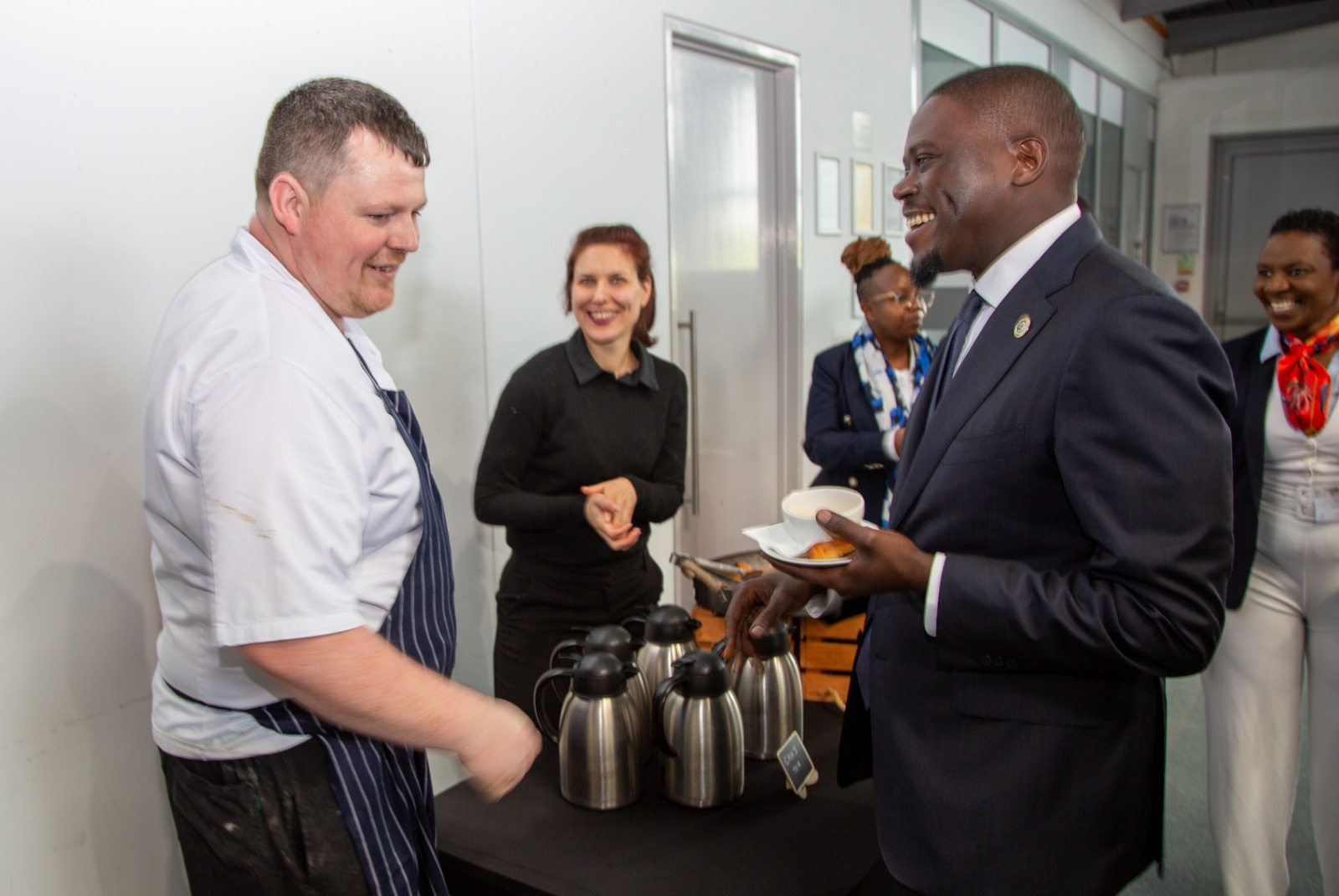

CEME campus welcomed a group of university students to discuss marketing strategies and challenges for the future.
The event, which included topics on innovation, health and smart nutrition, was hosted by Perez Ochieng of food innovation company Sacoma and included a visit from Nairobi Governor Johnson Sakaja and his team.
Sacoma, founded by Perez and Sam Ochieng, has operations in the UK and Africa and aims to drive positive change in the food supply chain.
We were also joined by Isaac Angbore, a Year 12 student at Dagenham Park Church of England School, who attended for the experience.
J Wainaina, Science teacher at Isaac’s school, said: “Research and development, science and Innovation cannot be advanced without involving students as the future disruptive innovators of solutions to global problems.
“Isaac and I had discussions which showed there is a gap on how we are preparing students to become innovators, and we need more STEM emphasis at a young age to introduce possible opportunities and careers in the future.
“I took away the need for schools to work closely with organisations like CEME to give this growth edge to the young people to whom the global village phenomenon is a reality. The future is in their hands.”
Noorzaman Rashid, Chief Executive at CEME, said: “It was a delight for me to personally welcome Isaac to the CEME campus. I look forward to his next visit and hopefully he’ll bring some friends too.”
Isaac has written an article about his day at CEME, and the inspiration this gave him for his future.
My day at CEME by Isaac Angbore

At the end of the bus line, is where my day at CEME began. Automatic sliding doors entertained me into the glass building, not before noticing the array of intricately East-facing solar panels on top of the roof. After a brief but welcoming “good morning”, I set away down the spacious hallway, paralleled by the brisk walk of focused individuals. Only hearing the silent noise of hardworking people around me, I knew this compound was a catalyst for the diligent and persevering, who had the leisure of tailoring their work styles to suit them. However, I will soon learn that my premise of these premises promises so much more.
My wonderfully kind science teacher offered to book me into the event due to my interest in engineering and we sat in the waiting area discussing different scientific ideas, such as: the accumulation of heavy metals inside tea and their leaves, and progress within the internal combustion engine field.
We branched and digressed as passionate scientific peers do in conversation, eventually stumbling upon innovation. Innovation – the main reason the event was set up – practical creativity that solves real life problems. We discussed interesting but perhaps axiomatic theories like, ‘can innovation run out in a generation?’ The answer may be, simply, no. But exploring these topics can often provide insight into other subjects, even if it doesn’t change the answer of the initial question.
In ample time, we were greeted by some of the members of Sacoma, most notably Perez Ochieng. During a small briefing with her, I learnt a lot about the balance between supply and demand and climate-human proportions. Her work involves the innovation of food techniques, using insects as a primary protein foundation, human food, feedstock for animals as well as for waste treatment schemes. I was most impressed by how she explained the insect waste scheme with conciseness and brevity as I pondered the importance of harnessing insect’s biomass in our food chain. This explosion of innovation and information pushed me past my liminality of just thinking ‘CEME is a great place’ to knowing CEME is a great place.
After engaging with other venerable businesspeople, I was escorted to a small-looking donut-shaped pod alongside Marketing university students who were seeking extra knowledge that they could apply in a business perspective. Despite the deceptively small pod, it was obvious it was constructed with specific intentions, designed to increase space as well as conjure a conversational environment for both lecturer and student, another signal that innovation never stops. Being involved within a university setting taught me a lot about myself introspectively, as well as educationally.
The speakers, CEME CEO Noorzaman Rashid, Sacoma’s Perez Ochieng and CEME’s Tracey Wright, all delivered with conviction and passion about their areas of interest. If I were to summarise each to one point, respectively, they would be:
- A business is supposed to have clear and attainable goals, with as little controversy as possible.
- No matter how good the quality of a product is, without marketing it, there isn’t much chance of selling it.
- It is essential to level up young people’s skills according to the types of businesses that are forecasted to relocate there.
To round off the day, we were set on our feet and guided by an active and engaging cicerone around the campus of CEME. This type of experience was invaluable to me, as I got to see first-hand what different types of employers and workers do in their environments. One of the unique selling points of CEME is how fast they can progress an individual or business. For example, engineers or mechanics who complete their course there, have a high chance of working with one of CEME’s collaborators, Ford Motors, an exciting prospect for any young engineer.
Finally, my teacher and I had our parting discussions. I shared my extreme gratitude to those at CEME for the experience. In acquiesce the automatic doors parted, and my day at CEME was over, however, I see myself there again, sometime soon.
